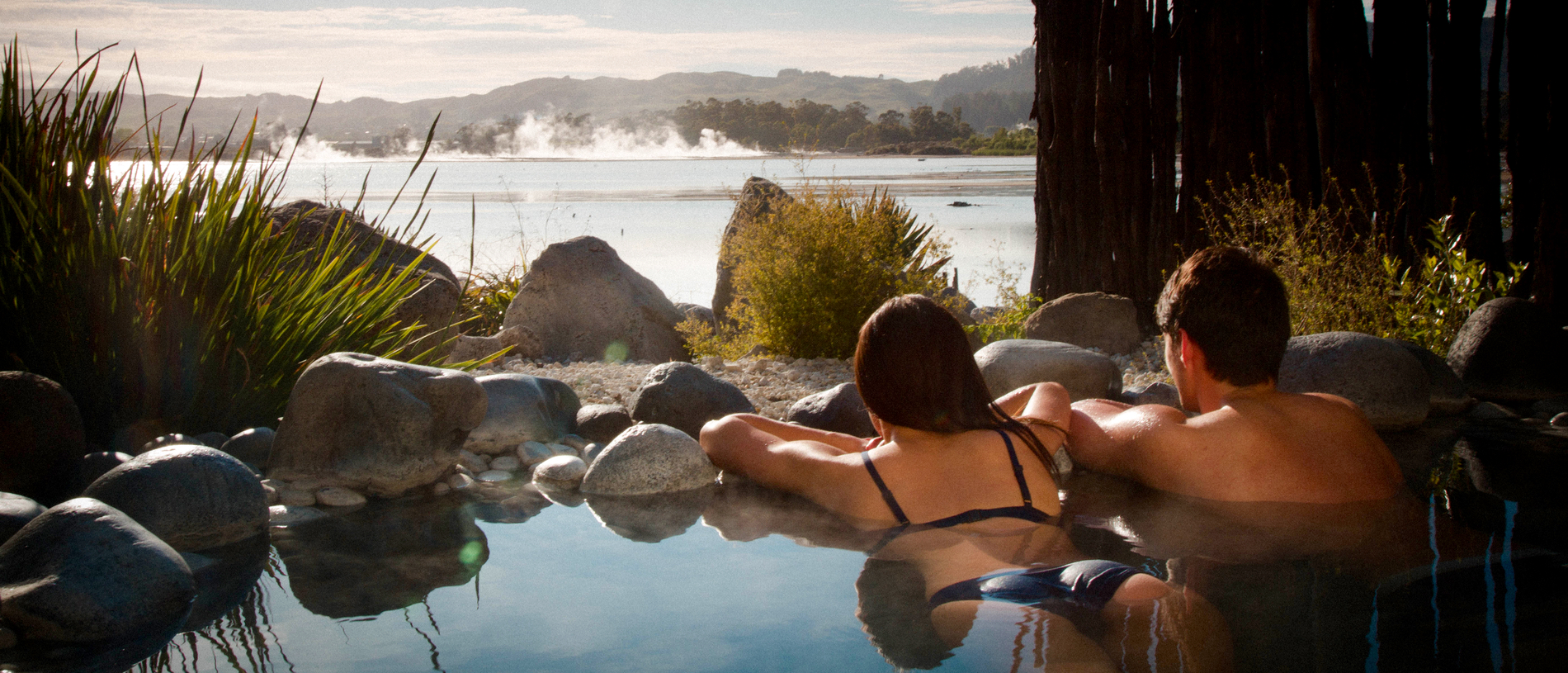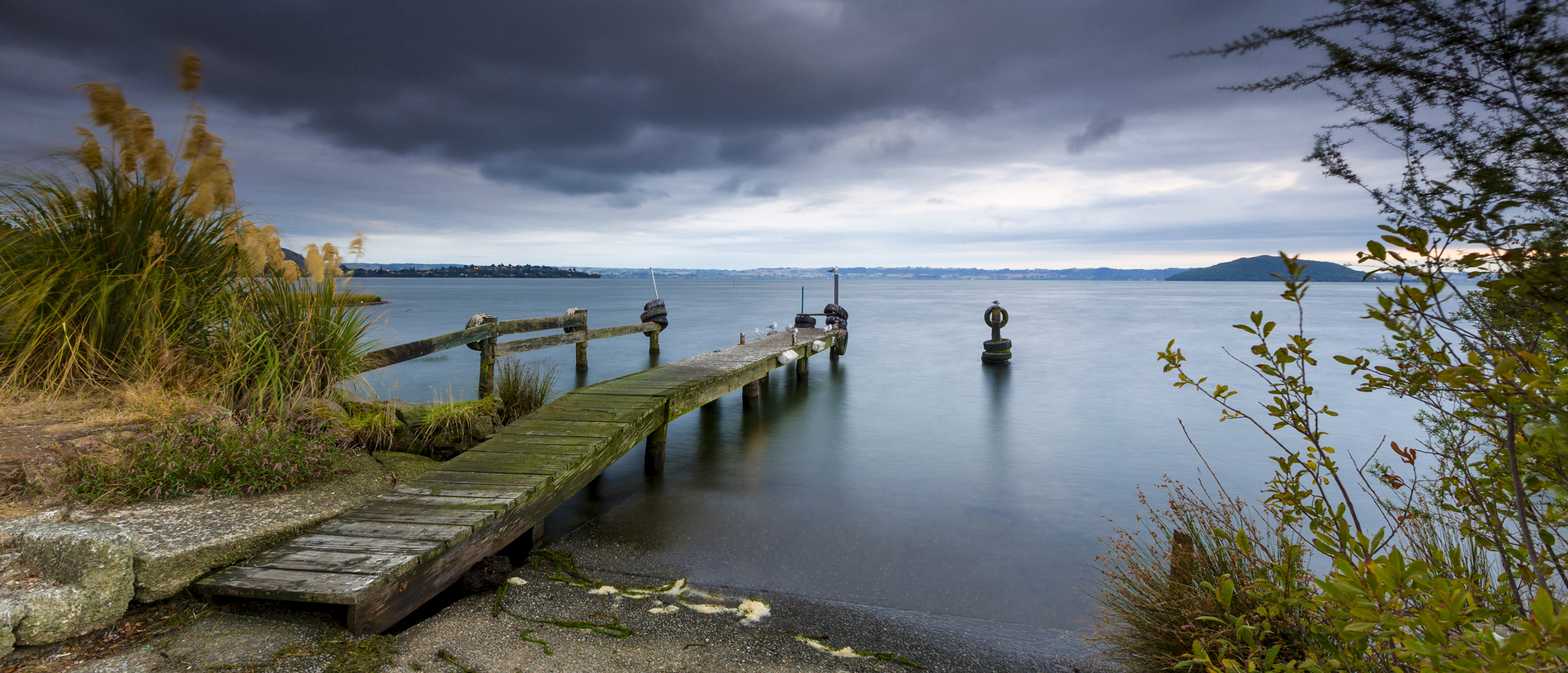
Five picks for a weekend in Rotorua
There's plenty to keep you busy for a weekend escape in Rotorua.

Rotorua announces itself to the nose at quite a distance. It’s not surprising it gets called ‘Rotten Egg Town’ (or worse) by every child who visits.
You do get used to the smell. Those who live there claim they don’t even notice it. It’s harder to ignore the other reminders of the volcanism that produced Rotorua’s unique landforms: the boiling pools, the bubbling mud, the geysers, fumaroles; the steam that seethes from stormwater gratings, patches of bush in parks and from the pumice sands of the lake foreshore.
The name ‘Rotorua’ translates to ‘second lake’ in its much longer, original name: ‘Te Rotorua-nui-a-Kahumatamomoe’ – ‘the second large lake of Kahumatamomoe.’ There are no fewer than 18 significant lakes in the district, and their Māori names were bestowed by an Arawa exploring party led by Ihenga, a grandson of the captain of the Arawa waka. Kahumatamomoe was Ihenga’s uncle, and the lake was named in his honour.
Every one of the lakes was produced by volcanic activity – either when blast craters were filled after the fireworks were over, or when waterways became blocked by volcanic debris. Three volcanic systems were responsible, namely the Ōkataina, Rotorua and Rotomā calderas (a ‘caldera’ is the crater or craters formed when molten rock reaches the surface and erupts). Of the three, the Ōkataina caldera is thought to remain the most active: it has blown six times in the last 10,000 years and it is expected to erupt again before too long.
The last significant eruption was the one where the lava dome known as Mount Tarawera split apart in spectacular fashion on June 10, 1886, burying a number of local villages (one of these, Te Wairoa, the ‘buried village’, is New Zealand’s own Pompeii), killing an estimated 150 people and obliterating the so-called ‘eight wonder of the world’ – the Pink and White Terraces – which were located more or less where Lake Rotomahana is now. As with every other eruption in this zone, the Tarawera event dramatically changed the landscape. Many of the district’s lakes came into being as a result of it; other lakes that predated it disappeared.
Te Arawa established themselves on the shores of Lake Rotorua soon after Ihenga’s journey of exploration. The district was blessed with volcanic soils, rich birdlife and (uniquely) hot and cold running water, so inevitably, human nature being what it is, there was almost constant feuding and squabbling over the bests bits amongst the various sub-tribes. These ebbed and flowed according to the cycle of take and utu (cause and revenge), only really settling down when strategic marriages turned enmities to alliances and when uniting against raiding parties from other regions.
Meanwhile, more Europeans were arriving in the district as word got out about its attractions. In the latter half of the nineteenth century, it was believed that natural mineral water had health-giving properties, and the popular Rotorua Bath House opened on the lakefront in 1908. It was closed to bathers in 1966 and languished until being restored and converted into the Rotorua Museum, which is well worth a visit.
Today, the geothermal wonderland remains a major drawcard to Kiwis and visitors alike. For plopping mud pools and spouting geysers you can, of course, visit the internationally famous Whakarewarewa. Or you can seek out the lesser known thermal areas, such as Waiotapu Thermal Park south of town, or Waimangu Volcanic Valley to the north, which was created by Tarawera’s 1886 eruption.
Inevitably, there are plenty of hot pools around Rotorua. The Polynesian Spa has 28 pools to choose from, along with the usual assortment of massage therapies to complete the experience.
There’s also Blue Baths , housed in the original 1933-vintage building located in Government Gardens, not far from the Bathhouse. The baths scandalised the general public at the time because they allowed men and women to bathe in the same pool.
But there’s no need to be as posh as all that about it. A short drive in the direction of Taupō you’ll find the Waikite Valley, where there is an excellent public bath fed from a spring (Te Manaroa) just up the hillside. Further along the Taupō Road, turn off towards the little forestry town of Reporoa where you’ll find Butcher’s Pool, a modest little facility comprising concrete walls over a gravel bottom through which mineral water upwells. It can occasionally look unattractive, as the soft water encourages the formation of a frothy scum on the surface, but it won’t hurt you, and if you really want to, you can open a little sluice gate to drain the water. Don’t forget to close it!
There’s also the locally famous Kerosene Creek. Here, the creek flows over a couple of small cataracts, at the feet of which people have made bathing pools. The water temperature varies (and the upstream pool is warmer than the downstream) but the experience is free!
Soaking here of a winter’s night with candles glimmering through the drifting steam is a quintessentially Rotorua experience. The word has got out, though, and you can often find yourself sharing it with a bit of crowd – many of whom regard clothing as optional.
The hot pools and creeks are not the only bodies of water worth visiting in the Rotorua district. Wild brown and rainbow trout spawn in many of the tributaries to Lake Rotorua and hatchery-raised fingerlings are released every year, too, which makes for plenty of action fly fishermen or spinners alike. Tiger trout have been released into Lake Rotomā, the only one of the lakes to be stocked with them. If conditions – especially wind, or the occasional algal bloom – make Rotorua unfishable, the other lakes are worth dropping a line into, as their high shorelines provide shelter and their superior water quality produce excellent fish.
Waterskiers, jetskiers and kayakers also appreciate the Rotorua lakes. Each has its own character and charm. Lake Rotomā, the easternmost of the chain of lakes is deep (over 240m in places), surrounded by native and exotic forest, and in the middle, there is a sunken island. According to legend, it was once inhabited, but the tohunga whose abode it was became incensed when his calls for a canoe to fetch him from the mainland were ignored. He cursed the village and overnight it was inundated and its inhabitants drowned. The island still shows occasionally when the lake level is very low.
Rotoiti – Little Lake – is connected to Rotorua by the narrow Ōhau Channel, along which Hongi Hika’s tauā (war party) gratefully paddled the canoes they had dragged from the coast on their surprise attack on Arawa at Mokoia Island. While the southern shore of the lake is accessible by road, the best bits of the lake can only be reached by boat, including the Manupīrua hot springs. There are five jetties where you can tie up anything that floats or catch a water taxi service from the road end at Ōkahu Bay.
The true jewel amongst the beautiful Rotorua lakes is arguably Ōkataina. It’s a merry place, by name and by nature: its full name is Te Moana-i-kataina-a-Rangitakaroro (‘the place where Rangitakaroro laughed’), commemorates the fact that someone told a joke here to rangatira Rangitakaroro which he evidently found very funny.
Ōkataina is predominantly fed by underground channels from Lake Rotoiti so the water is very cold and clear. Completely fringed by high, bush-clad hills and with all but one beach inaccessible except by boat or on foot, the lake is secluded and quite lovely. There is a network of walking tracks in the native forest with abundant birdlife and the odd wallaby that will lope out of the undergrowth.
Nearly as beautiful is nearby Lake Ōkareka, which is partially surrounded by the Ōkareka Walkway boardwalk. Silver Beach, around an hour’s walk for the return journey, is a very popular picnic spot with those in the know. Such is the popularity of the lake that there is a small township of the same name on the western shore.
Lakes Tikitapu and Rotokākahi are known to locals as Blue Lake and Green Lake respectively. The former is a favourite playground for locals with watercraft: the serenity is often broken by the buzz of two-stroke motors as waterskiers and jetskiers revel in the sheltered waterway. It takes about an hour to walk around, and there are a number of high points from which it is possible to appreciate the distinctively blue colour of the shallow water and to compare and contrast it with that of neighbouring Green Lake.
Green Lake is so-named for its almost emerald-coloured water, although the Māori name signifies its abundance of freshwater mussels or kākahi. It is privately owned by Tūhourangi, a sub-tribe of Arawa, for whom the island Motutawa at the south-western end is sacred, being an urupā (burial ground). Due to its tapu status, there is no swimming, fishing or boating on or in Rotokakahi, which may be appreciated with the eyes only.
Rotomahana is the last of the largest lakes and once the site of the Pink and White Terraces. The lake was formed when the eruption of Tarawera joined two smaller lakes. There is still obvious volcanic activity here: one of the more interesting sights on a tour of Rotomahana – thrown in when you join a guided tour of Waimangu Valley – is the steaming cliffs at the Tarawera end.
Like most places that draw tourists, Rotorua has been quite resourceful in laying on attractions to keep them busy. The Redwoods Forest mountain bike park is one of the best and if adrenaline is your thing, at the Skyline on the northern edge of town, there’s also the famous luge where you can speed down a concrete track semi-reclining on carts resembling those things mechanics use to slither under cars. Not terrifying enough? There’s also zip lines, a sky swing, bungy jumping and a thing called the Freefall Xtreme which creates a wind tunnel to simulate a skydiver's free-fall. God save us.
In short, if you can think of a way of defying death, or gravity, or both, they’ve probably thought of it first at Rotorua and worked out a way of making it pay.
More sedate, but very popular amongst overseas visitors is the Agrodome in Ngongotahā. Established over 40 years ago by gun shearers, the Godfrey brothers, the Agrodome introduces the uninitiated to the workings of New Zealand farming, most notably sheep. Watch sheep being shorn – even give it a go yourself – or content yourself with feeding and patting the woolly ones (and alpacas, deer, cattle, pigs and more). If you’re more interested in native fauna, trout, or both, Rainbow Springs and Paradise Valley will get you up close with native birds. Paradise Valley has the added attraction of an enclosure housing African lions. Best time to see these is dinner time at 2:30pm.